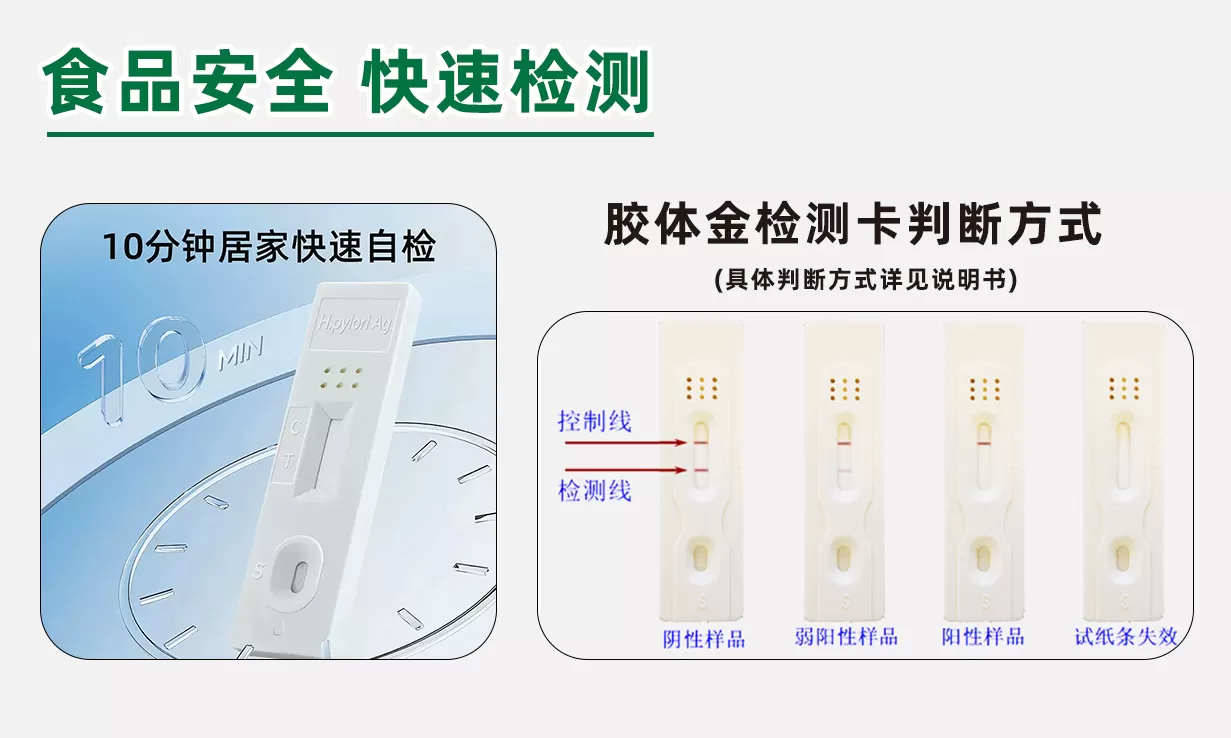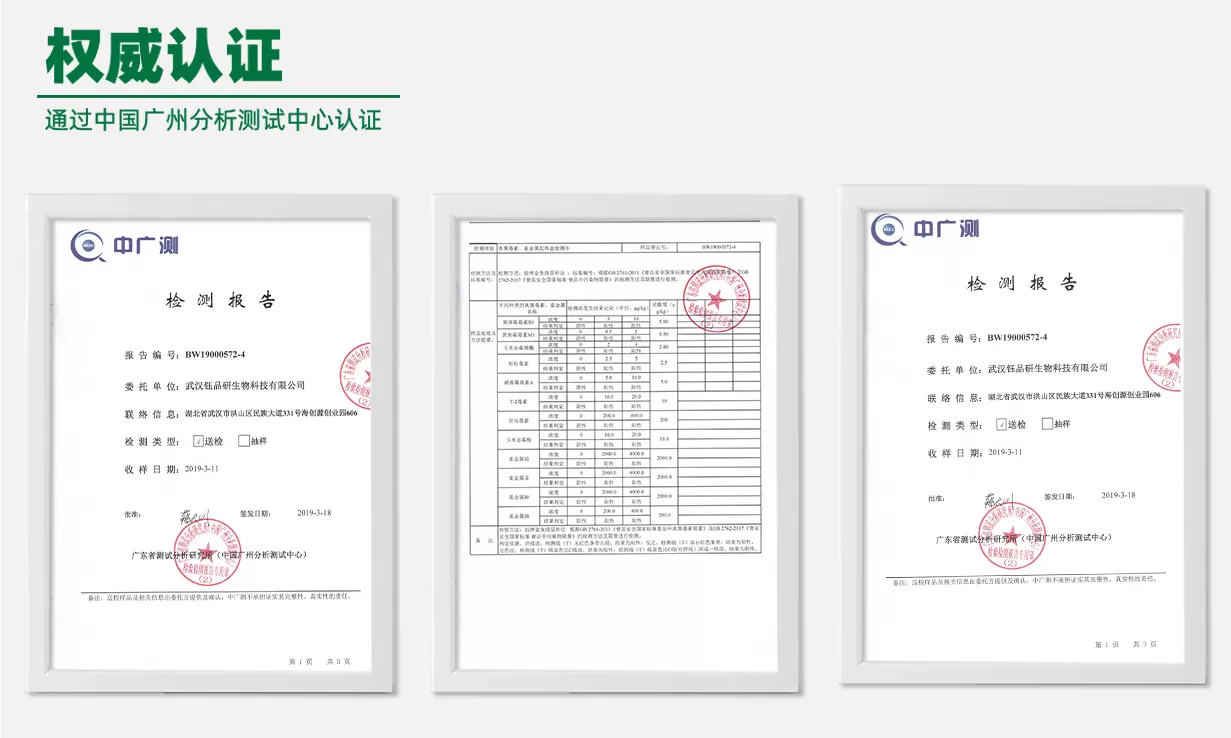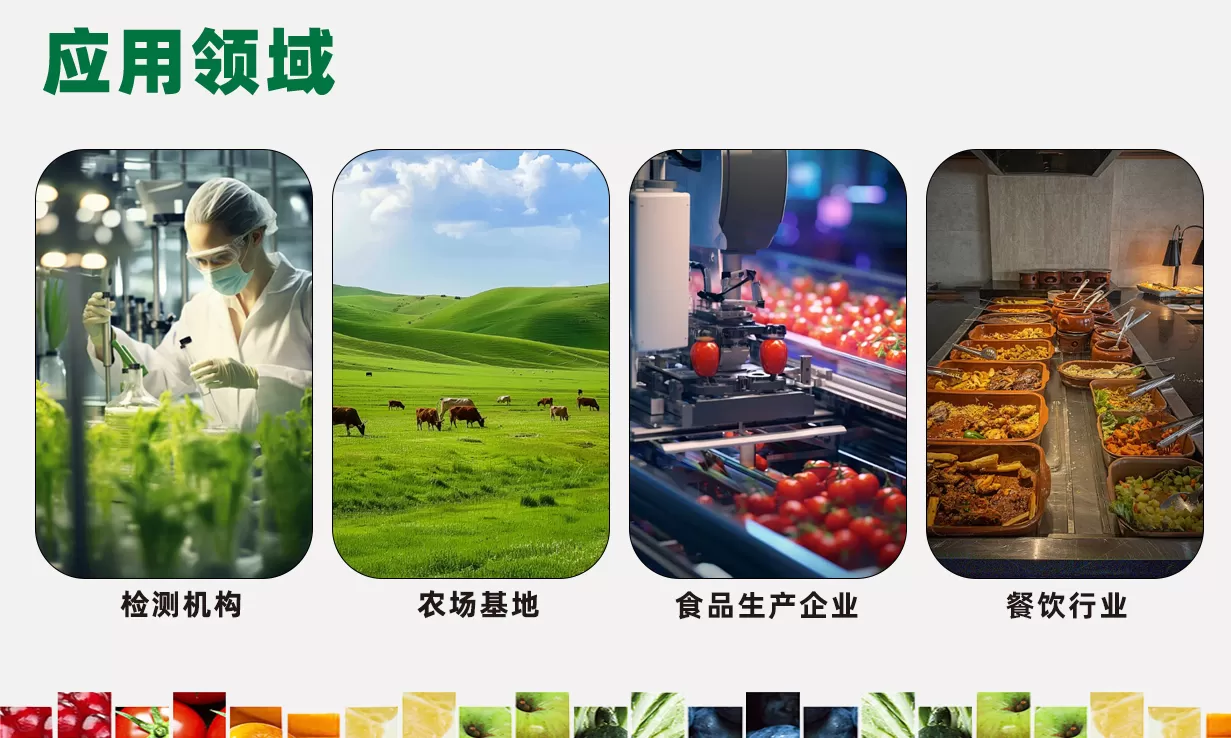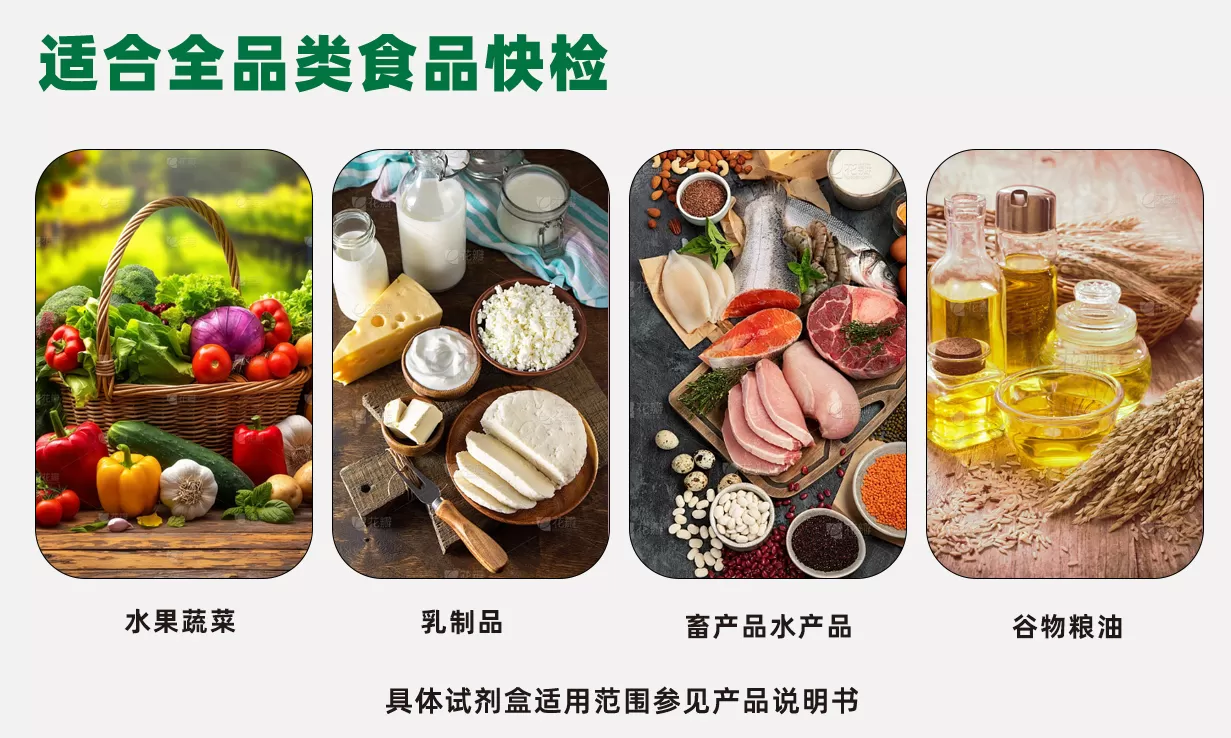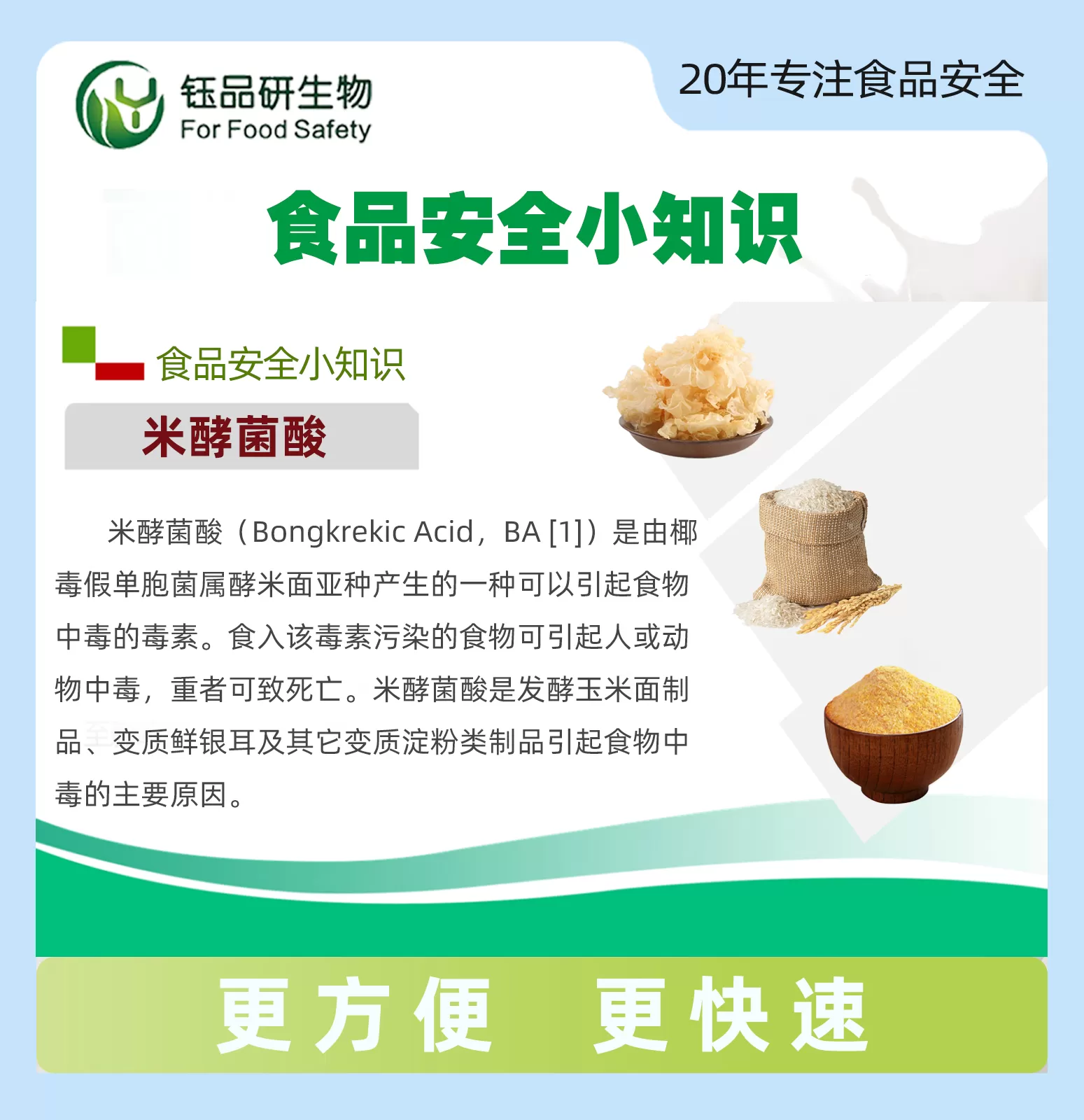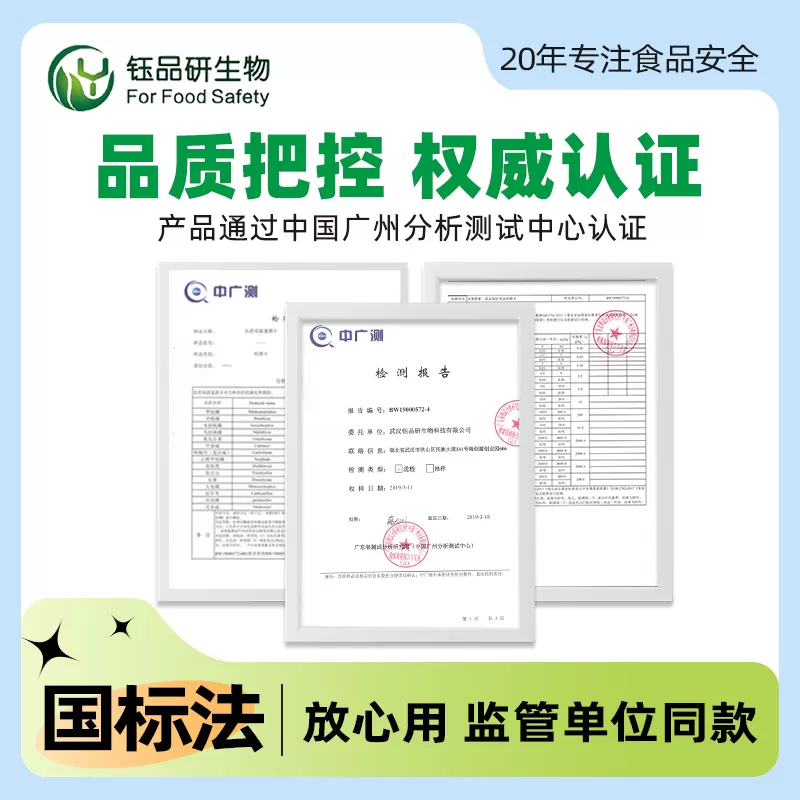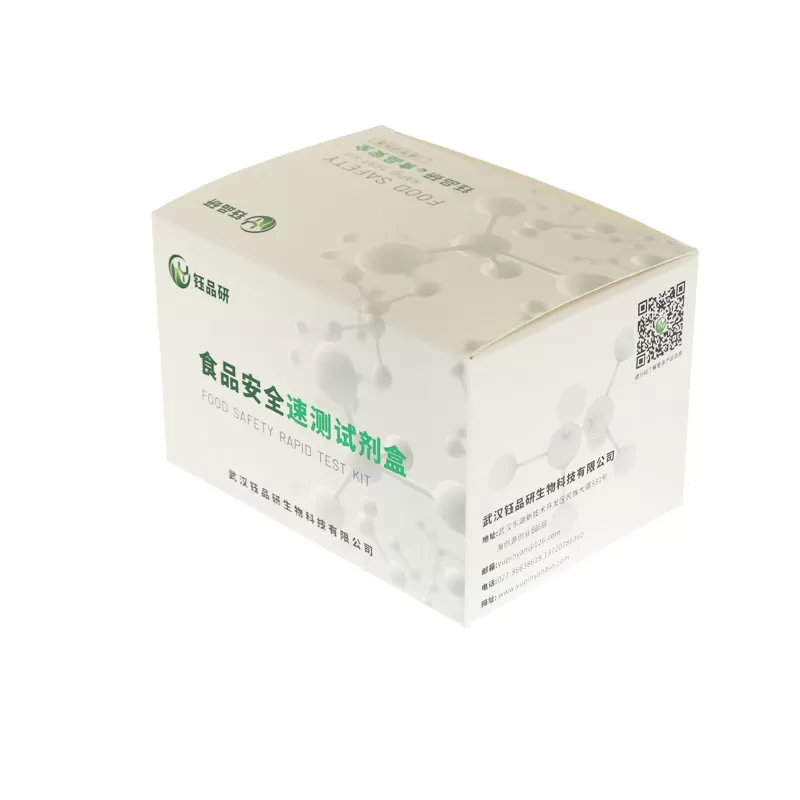Rice yeast acid colloidal gold rapid detection card
Instructions for use
Principle and use
This product applies the principle of competitive inhibition colloidal gold immunochromatography for rapid detection of rice yeast acid in samples such as pho, rice flour, cold skin, etc. After the sample solution is dropped into the sample hole of the detection card, the rice yeast acid in the sample solution is combined with the gold standard antibody, thereby preventing the gold standard antibody from binding with the rice yeast acid conjugate on the cellulose membrane. The result is judged according to the color development depth of the T-line and the C-line. The whole detection process only takes about 15 minutes, which is suitable for all kinds of enterprises and testing institutions.
2 technical indicators, detection limit: 5μg/kg (ppb)
3 need to bring their own tools
homogenizer, 15 mL centrifuge tube, balance, centrifuge, pipette, vortex meter (optional), timer
4 sample pretreatment 117277984Iv.1 Weigh 0.5 g of sample in a 15 ml centrifuge tube; 117277984Iv.2 Add 4 mL of dilution, mix violently for 1 minute, 4000 rpm centrifuge for 5 minutes (if no centrifugal equipment can stand for 10 minutes), supernatant as the liquid to be tested;
5 sample detection
5.1 Tear off the detection card aluminum foil bag, remove the detection card/gold microporous/dropper (a total of 3 kinds of consumables), placed on a flat, clean table.
5 with pipette or aluminum foil bag matching dropper to absorb the above liquid to be tested 120 µL (about 4 drops) in the gold standard micropores, blown with dropper to completely dissolve the purplish-red material in the pores, let stand horizontally, and wait for the reaction for 2 minutes; all the liquid in the gold standard micropores is added dropwise to the sample hole (S) of the detection card;
5 start timing after adding the sample, and leave it at room temperature for 8-10 minutes to judge the result.
6
Negative (-): In the detection window, the purple line appears on the control line (C), and the color development of the test line (T) is consistent with or deeper than that of the C line, indicating that the concentration of rice yeast acid in the sample is lower than the detection limit or no rice yeast acid.
Positive (+): In the detection window, the purple line appears on the C line, and the T line is not colored or lighter than the C line, indicating that the concentration of rice yeast acid in the sample is higher than the detection limit.
Invalid: In the detection window, the purple line does not appear on the control line (C).
7 Precautions
7.1 Products that have expired or the aluminum foil bag is damaged cannot be used.
7 When the test card is taken out of the refrigerator, it should be restored to room temperature and opened. The opened test card should be used as soon as possible to avoid failure after dampness.
7 Do not touch the white film surface in the center of the test card.
7 The liquid dropper should not be mixed to avoid cross-contamination.
7. 5 The sample solution to be tested should be clear, no cloudy particles, no bacterial contamination, otherwise it will easily lead to abnormal phenomena such as blockage and insignificant color development, thus affecting the judgment of experimental results.
8 Storage and shelf life
8 Storage conditions: 4-30 ° C Store in the dark, do not freeze.
8.2 Shelf life: valid period 1 year, see the outer packaging for the production date.
9 kit composition
specification
composition
10 times/box
20 times/box
test card (containing gold standard micropores, dropper, desiccant)
10 parts
20 parts
dilution
1 bottle
2 bottle
15ml centrifuge tube (recyclable)
4
8
manual
1 parts
1 parts

